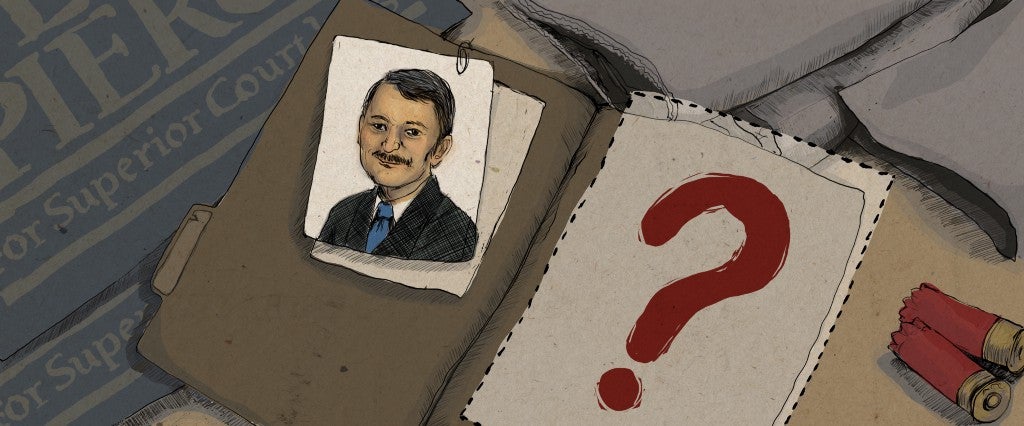Charles Locklear and his brother Tony bounded up the back stoop of their cousin Julian Pierce’s brick ranch home. It was shortly after 7 a.m. on March 26, 1988, and the sun had just broken through the morning mist. The Locklears came to distribute “Julian Pierce for Superior Court Judge” lawn posters across the rural landscape of Robeson County, North Carolina. If Pierce — a 42-year-old Georgetown-educated lawyer who’d left behind a career in D.C. to advocate on behalf of Robeson’s poor and minority populations — won the election in early May, he would become the state’s first Native American Superior Court judge.
Pierce’s campaign literature made clear the disdain he felt for his opponent, District Attorney Joe Freeman Britt, “the very symbol of all that’s wrong with the most politically backward county in North Carolina.” Britt, a 6-foot, 6-inch anti-crime zealot, relied on “legal harassment, police brutality and voter intimidation to keep the white minority in control.” In 14 years in office, Britt had won more than 40 death penalty convictions, earning him the dubious title of “Deadliest Prosecutor in America” in The Guinness Book of World Records. Most of those facing execution were African American or Lumbee Indian — the tribe to which Pierce, along with more than a third of the county’s 110,000 residents, belonged.
Pierce’s work running a legal services office in Robeson helped shape his belief that the only way to clean up the county was through its judiciary. For months, he had conducted his own investigation into the widespread allegations of drug corruption within the Robeson County Sheriff’s Office, which he criticized Britt for ignoring. Cocaine trafficking was the county’s multimillion-dollar growth industry, tempting many Lumbees who were raised in poor sharecropping families like Pierce’s to reach for easy money.
In 1989, a young man speaking strictly on the condition of anonymity described driving to a field with a major dealer to pick up a kilo of cocaine from a sheriff’s deputy. Another told me of an arrangement where he paid $1,000 each month to a deputy sheriff in exchange for protection for his $10,000-per-month cocaine business. He said that one time, a group of narcotics deputies busted him, demanding to know which officer he’d been paying off, before divvying up his drug money among themselves. “‘If you mention anything about money it will be a worse punishment for you,’” he said they told him. “So I forgot about the money.”

And while the Locklear brothers understood the risk in Pierce’s effort to investigate, they didn’t think much of the broken glass and blood smudges on the back door of his home as they let themselves in. “This asshole lost his keys and had to bust the glass to get in,” Charles remarked to Tony.
Charles pushed open the door as he shouted, “Don’t you know that anybody can walk in the house like this….”
The Locklears froze. There, in the kitchen, Pierce lay dead in a pool of blood. Two shotgun blasts had ripped through his chest and abdomen. A third shot entered just behind his ears, execution style, launching his brain and pieces of bone into the next room. A series of smallish, bloody footprints — “like the old-style tennis shoes a lady would wear,” recalled Charles — tracked across the kitchen floor, out the back door and into the carport.
“I can’t stand this,” Tony told his brother before rushing back outside. Charles pulled himself together and called the police. As the news of Pierce’s death spread, the Lumbees’ anguish eclipsed the brothers’ shock and grief. With his murder, the hope for justice in Robeson died, too.

When Pierce’s 17-year-old daughter Julia found out what had happened, “the first thing I did was go to my room, where I prayed for his soul.” In a daze, she, her mother and her twin brother Julian Jr. climbed into their van and began the 200-plus mile trek from their home in Virginia to Pierce’s in Robeson.
The last time the twins had traveled this route was three months earlier with their father at the wheel. The three of them barely spoke. The family had argued throughout Christmas about a letter their mother had sent Britt, in which she called Pierce an “egotistical, womanizing, hard drinking [man] … found guilty of adultery in court.” Should the letter spread among churchgoing Lumbee voters, it could harm Pierce’s political prospects.
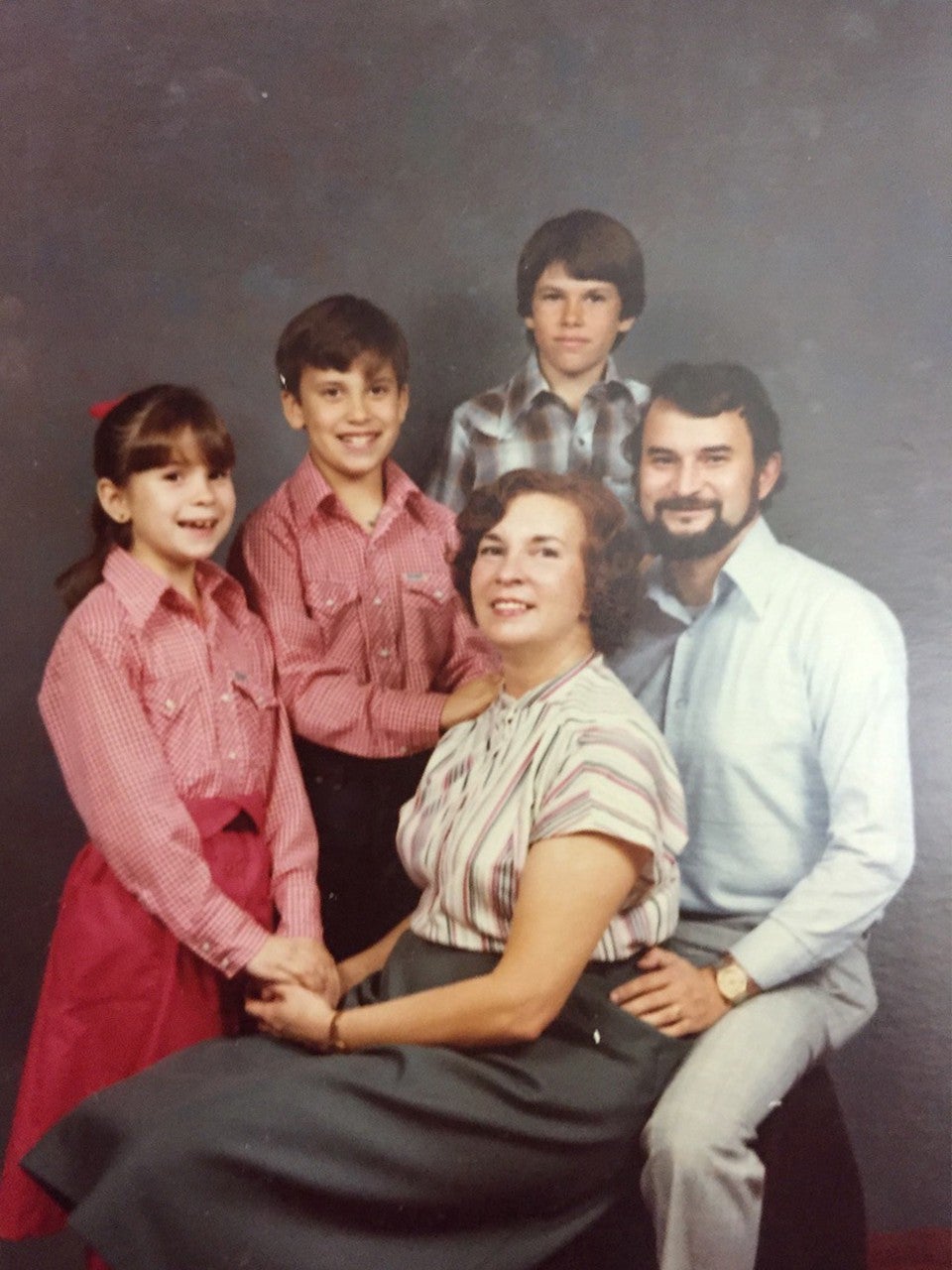
But the mood changed over a fast-food lunch, when Pierce revealed there was something else on his mind. He told his children he suspected that Robeson County Sheriff Hubert Stone was “involved in drugs, and [he] was doing some work trying to prove it,” Julia remembers.
“Do you think you’re in danger?” she asked him. He paused for a minute and told her it was far more likely someone would attempt to discredit him by planting drugs.
Maybe you should back down — not run for judge, not investigate Stone.
The words ran through Julia’s mind, but she never said them. “It wouldn’t have stopped him anyway,” she said.
When Julia and her family arrived at her father’s house that afternoon, nearly 200 people, mostly Lumbees, had gathered on his front lawn. Some wept; others wore caps bearing his name or waved the campaign posters that hadn’t yet been distributed.
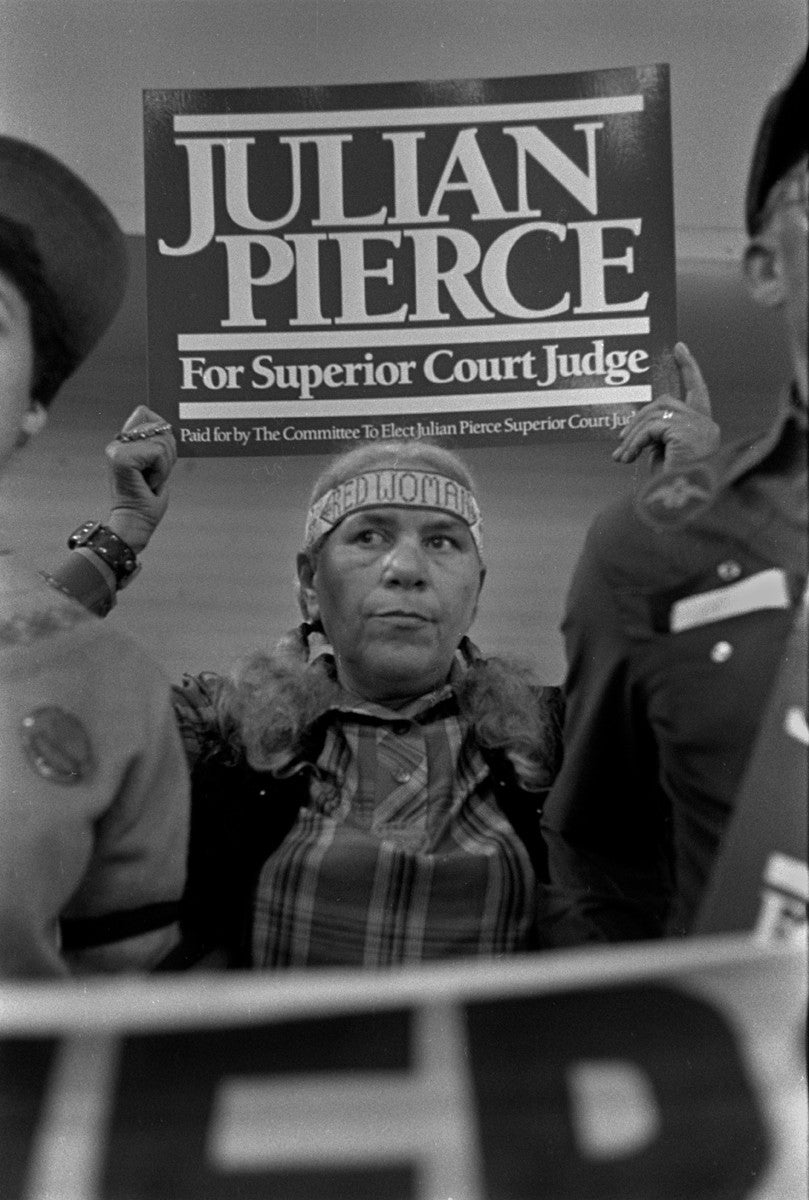
Stone, an affable, soft-spoken white man, greeted the family, informing them that forensic experts from the State Bureau of Investigation continued to scour for clues inside the house. As the afternoon wore on, Stone stepped before the crowd to ask for help. “We have very little on what we can go on,” he said. “We’re begging you to come forward.”
Instead, the group nearly revolted.
“You’re crooked as hell,” someone shouted, according to the Greensboro News & Record.
“Oh, God! Oh, God! How much longer do we have to take this?” cried a woman, collapsing to her knees on the grass.
Stone was “shaking,” remembers Charles Locklear. “He was scared to death.”
“Is the killing political?” asked a reporter.
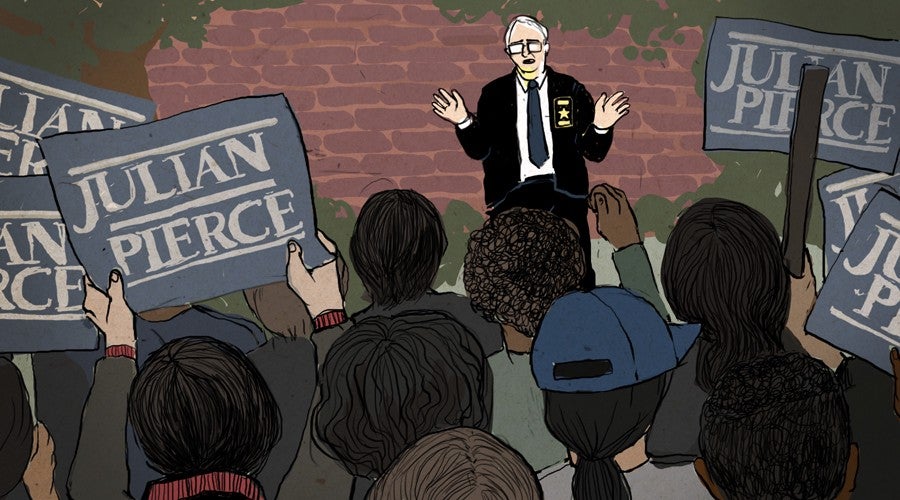
“It looks like he was assassinated,” Stone replied, according to newspaper reports. “I never thought anything like this would ever come to Robeson County, where somebody would kill somebody in their own home over an election.”
An older Lumbee farmer in denim coveralls drawled softly, “We need to go home and get our damn guns and start killing us some white people.”
Out of nowhere, the ambulance carrying Pierce’s body backfired. People on the lawn screamed and dropped for cover, believing shots were being fired.
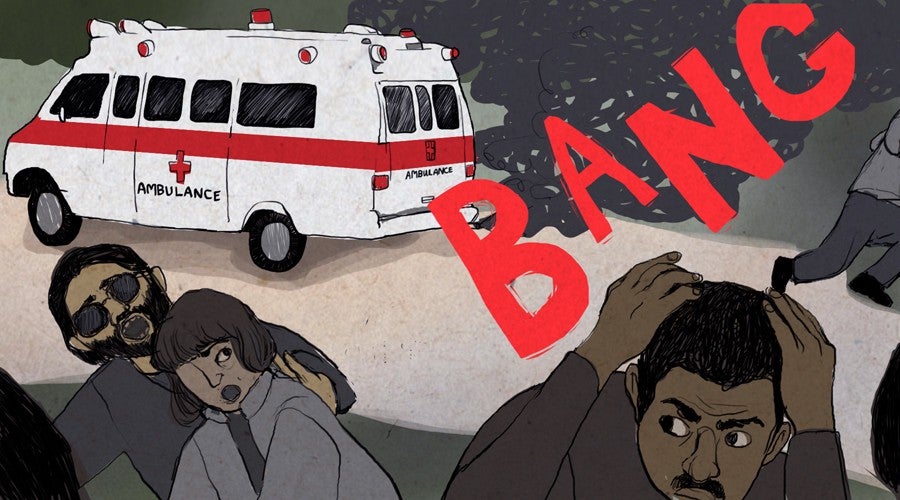
Hardware stores had already sold out of shotgun shells earlier in the day. Religious leaders called for calm, and the governor put the National Guard on high alert.
The Lumbee community was terrified. If a prominent leader like Pierce could be murdered, then everyone in Robeson County was at risk.

People often spoke of Pierce’s opponent, District Attorney Britt, in a whisper, as though he were the Voldemort of Robeson County. Stories of Lumbees and African Americans being coerced to plead guilty in court were as common as the ramshackle tobacco barns that dotted the landscape.
“It’s hard to comprehend how unwholesome and suffocating the system was,” testified Maurice Geiger — an attorney and founder of a nonprofit that monitored Robeson’s courts — in 1991. In a review of thousands of cases from the 1980s, Geiger estimated that at least 1,000 innocent people were wrongfully convicted every year; he also found that Britt’s office used a range of aggressive ploys to force guilty pleas. The court calendar was manipulated to make defendants appear in court for days or weeks on end while they waited for their cases to be called. Others were tricked into signing forms that waived their right to counsel — often easy to do, given the county’s adult illiteracy rate of 30 percent.
In 1987, the North Carolina Commission on Indian Affairs found the County’s record of disproportionately arresting and incarcerating Indians to be the worst in the state. “They’re going up against the Indian citizens almost with an army,” the commission’s head told the Charlotte Observer. “There is no justice there.”
Police killings of Lumbee men weren’t uncommon either. On November 1, 1986, Sheriff Stone’s 23-year-old son Kevin, a deputy sheriff, fatally shot Jimmy Cummings, an unarmed Indian, during a vehicle stop. But rather than call a grand jury to determine if criminal charges were warranted, Britt convened a coroner’s inquest — a hearing presided over by a funeral director with no legal training — to determine the cause of death. Kevin Stone offered no testimony, and after 12 minutes of deliberation, the coroner’s jury found his actions “an accident and/or self defense.”
Members of the Cummings family told federal authorities that Cummings had been dealing cocaine he said was stolen from the sheriff’s department evidence locker. Only two deputies had keys to the lockers — one of them Kevin Stone, according to The Robesonian. The family’s allegations, however, never resulted in fresh charges.
The following year, Deputy Sheriff Mark Locklear shot and killed a Lumbee man named Edward Zabitosky after he gave chase during an attempted arrest. The coroner’s jury once again ruled self-defense. Months later, a TV station reported that a source had told Stone that Zabitosky was soliciting a hit on his son Kevin — an account Stone confirmed to reporters. Mark Locklear denies this possible motive, and it was never presented at any form of trial.
Outraged by the Cummings shooting and the hasty justice that followed, the Lumbee community launched a civil rights movement that climaxed in a protest march on April 20, 1987. To the beat of tom-tom drums, 1,500 Indians wended their way through the stately brick buildings of downtown Lumberton, the county seat, gathering on the courthouse steps with signs that read, “Fair Treatment in Courts, End Major Drug Trafficking, Stop Excess Force” and “Indian Hunting Open: Who’s Next?”
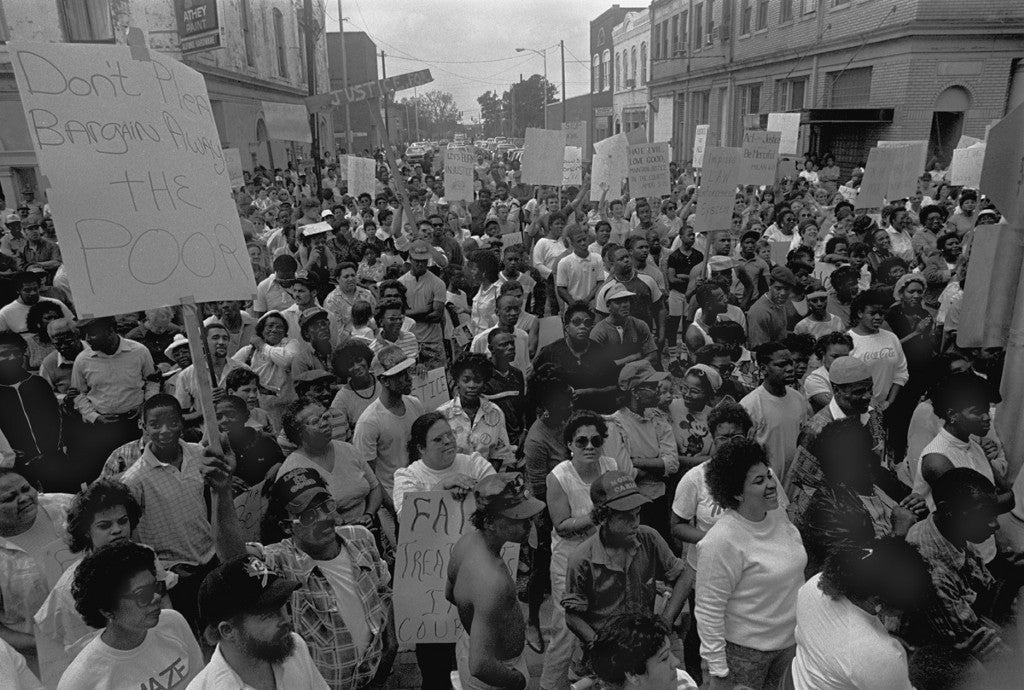
In this politically charged environment, Pierce began soliciting allies from the community of African-American and Indian lawyers to support his candidacy for the judgeship. Many residents, including Lumbee attorney Dexter Brooks, feared a backlash from the county’s elite. “There was a sense of danger,” says Brooks, who declined to offer Pierce his support at first. “[Pierce was] viewed as taking on the whole establishment.”
“There was a good old separatist history,” adds Rev. Sidney Locks, an African-American state assemblyman from Robeson who kept his support for Pierce private at first. “There were whites who didn’t want unity, blacks who didn’t want unity and Indians who didn’t want unity.”
Above all, Stone didn’t want unity among the area’s minorities, and he actively discouraged Pierce from running. “I approached him and asked him not to run for Superior Court Judge, and asked him to run for [a less powerful position instead],” Stone told me in a 1989 interview. “I said, ‘Joe Freeman Britt is going to run, and I’d rather not have a fight in an election over it.’”
But Pierce persevered. On January 8, 1988, he launched his campaign during a rare North Carolina snowstorm, which added to the sense that he was up against the impossible. Yet the following month Robeson’s political landscape transformed when Eddie Hatcher, a 30-year-old journalist, stormed the offices of The Robesonian and took 17 hostages — with the help of an associate and two sawed-off shotguns. His primary demand? For the governor to launch a probe into law-enforcement corruption in Robeson County, which over the course of the daylong hostage incident, the governor’s office agreed to do.
Like Pierce, Hatcher had been investigating local corruption, and he’d become terrified that his life was at risk because of what he knew. He’d obtained maps he said were given to him by a former police informant detailing players in Robeson’s drug trade, including Sheriff Stone, and he’d been sharing his leads with Pierce for months. “I told him about things I was learning,” Hatcher later told me through prison plexiglass in 1989. “Julian said, ‘I’m checking into things myself.’”
To Pierce’s surprise, the hostage-taking galvanized the community and turbocharged his campaign. “We felt it was worth a try to unite the African-American and Indian community,” despite the risks, explains Locks, who went public with his support for Pierce after the Hatcher incident. “We shook hands to that effect.” When a Pierce-backed school-merger referendum passed a few weeks later — putting an end to de facto segregation in Robeson’s schools — it signaled that Robeson’s minorities had come together for change, and that victory for Pierce was within reach.

“He told me he felt he was going to win,” says Julian, Jr. “It made me proud. I was thinking, Dad’s doing something. And he sounded real good about himself. You know, good that he was helping people and that he could stop the illegalness.”
On the night of March 24, Pierce’s volunteers met to discuss bringing the campaign into its final stretch. “We thought we were in a very comfortable position,” recalls Curt Pierce, one of Julian’s cousins and a trusted campaign adviser. “It was a matter of just holding our ground. That’s what we were talking about — that and the security thing.”
The “security thing” was the increasing sense that Pierce was at risk. “I’m not sure how it got cranked up, but we decided that somebody needed to move in with Julian,” Curt Pierce says. “There was a general consensus among us that something was going to happen, and we thought it would get to the point where he needed to surround himself with some kind of security. I even suggested he carry a gun with him, but he wouldn’t hear of it.”
That night, across town, while Pierce glad-handed at a political dinner, Stone took him aside. “Him and I walked off by ourself and we discussed it all,” Stone recalled in 1989. “[Pierce] said, ‘I know you and Joe [Freeman Britt] are working on me.’ And I said, ‘I’m not going to hurt you.’”
Pierce returned home angrier than Curt had ever seen him. “For the first time, he was anxious for someone to stay with him,” Pierce’s girlfriend Ruth Locklear told me in 1990. The next day, while Curt and Julian assembled campaign posters at a cabinet-maker’s shop, Julian told Curt about a message he’d received that morning from a campaign volunteer: “He told me, ‘Be very careful. There’s a lot of people down at the courthouse in Lumberton who are very nervous. From now on, we don’t want you by yourself at any time.’”
Curt asked Julian if he would let Curt accompany him everywhere he went, but Julian refused. “We finally concluded he wanted me to stay at home that night and tape the Carolina basketball game for him. He just really wanted me not to follow him. I still don’t understand it.”

Less than three days after Pierce’s murder, Stone stepped before the press to make a startling announcement: Julian Pierce had been killed by Johnny Goins, a 24-year-old Lumbee. The motive, according to Stone, was revenge, not politics: Pierce’s girlfriend Ruth Locklear had told Goins to stay away from her 16-year-old daughter, who was Goins’ ex-girlfriend. “Two warrants were issued last week by the girlfriend’s mother, charging Goins with trespassing,” Stone explained. “Goins felt Pierce had something to do with it. He got mad and he killed him.” Stone added that Goins had been helped by his neighbor, a 24-year-old Lumbee named Sandy Chavis.
Chavis, who had a history of anger issues and addiction, was taken into custody and charged with murder. Meanwhile, authorities found Goins in a closet at his father’s house, the side of his head blown off with a shotgun. His death was immediately ruled a suicide, the desperate act of a guilty murderer.
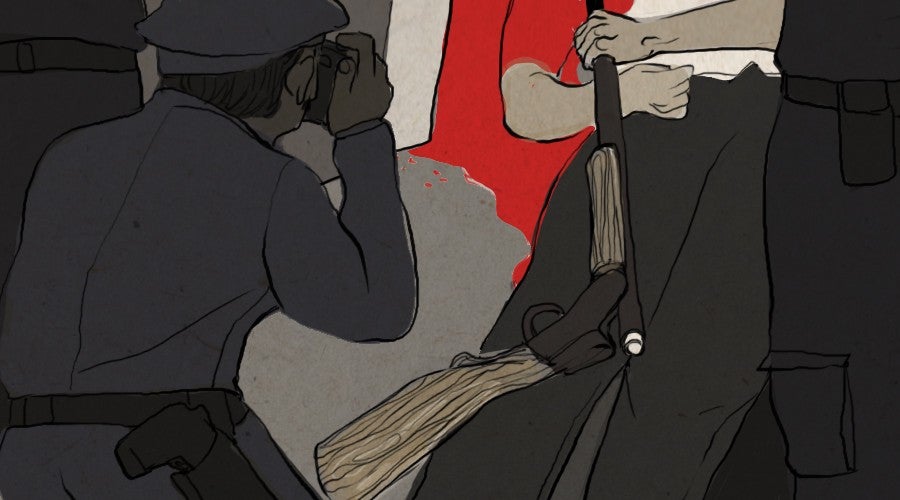
“I can assure the world that there was no political involvement,” Stone said — the exact opposite of what he had said the day Pierce’s body was found. “The people of Robeson County will understand that it’s just another murder.”
Except that many of them didn’t — including Pierce’s family, the Lumbee Tribe and the broader community, who struggled to make sense of clues that didn’t fit the official story. For instance, even though Goins left his own blood and fingerprints on Pierce’s back door, the footprints found at the scene were too small to belong to Goins or Chavis. Goins’ autopsy reported that he’d written a confessional suicide note, but law enforcement failed to produce the document. And the shotgun Goins allegedly used to kill himself lay across his lap, with its barrel inexplicably open, although it had just been fired. Moreover, the sheriff’s office dispatch tapes from the night of Pierce’s death had gone missing, as had Pierce’s briefcase, which he told associates contained information that would blow the county wide open. “It seemed way too neat that Johnny [Goins] killed him and then himself before anyone could talk to him,” Julia says.
“Do you think it was Johnny who shot him?” I asked Sheriff Stone during that same 1989 interview, on one of many trips to Robeson over the past three decades, as I worked to make a film about Pierce’s life and find out the truth about his death.
“I’d rather not answer that,” Stone told me, citing concerns that doing so might undermine Sandy Chavis’ murder trial.
“Was the gun open?” I asked Stone about the shotgun found next to Goins’s dead body. “No, it was closed. It had just been fired,” Stone replied with a purple blush, even though a crime scene photo shows otherwise.
But Chavis’s trial was never to be. On June 3, 1990, the night before the trial’s scheduled start date, James Coman, the special prosecutor assigned to the case, called a meeting to drop a bombshell: The key witnesses now refused to testify. There would be no murder trial.
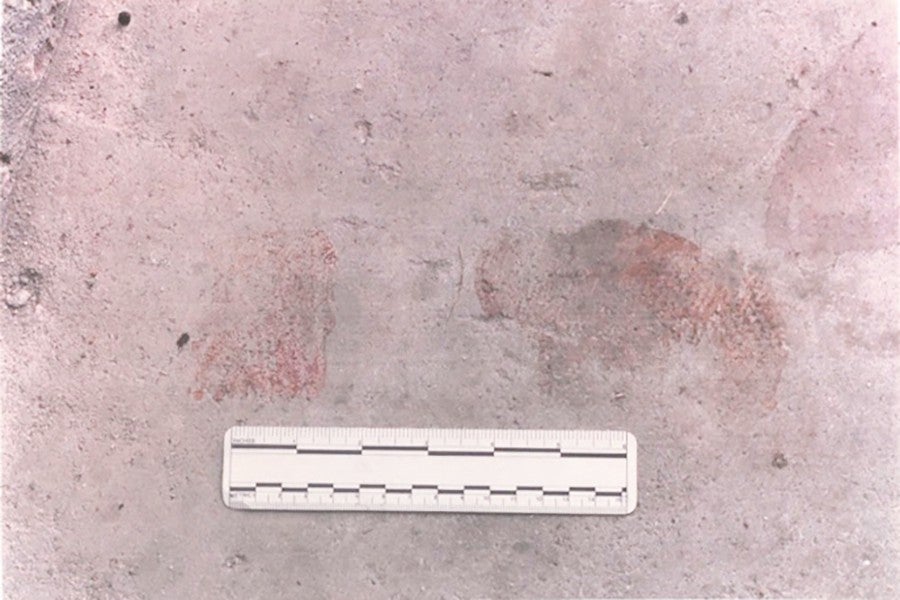
“We would be in effect doing a dishonor to Julian to go forward with something in our hearts that we know we cannot prove,” the special prosecutor announced. “The evidence points to Chavis’ involvement after the death, and that is what we should pursue, and that Chavis will plead guilty to.” The next day, Chavis — who was left permanently disabled after a fall in a grain elevator while free on bail — limped to the bench, sobbed and entered an Alford plea (where one pleads guilty without admitting guilt) to accessory to murder after the fact.
Next, Coman read from Chavis’ statement. It said that on the evening of Pierce’s death, Goins and Chavis drove to Pierce’s house, where Goins got out of the car. Chavis heard three shots fired and Goins returned to the car with a gun belonging to Chavis’ brother and admitted to shooting Pierce. Chavis ended up with a five-year suspended sentence and left court a free man. The State officially closed its case, ignoring a motion by the Pierce family requesting a trial so that “the entire truth about the homicide of Julian Pierce be dealt with fully.”
But Chavis’ own story continued to evolve. When Geiger and I visited him in 1991, Chavis said his earlier statement had been fed to him by arresting officers. They pulled him out of bed after he’d been drinking heavily and interrogated him overnight without an attorney present. He said he hadn’t stopped at Pierce’s house; rather, he and Goins kept driving after noticing sheriff’s deputies near Pierce’s home and a red pickup truck in the driveway.
In 2009, I visited Chavis again, and his statement changed once more, further damaging his credibility. This time, he said he and Goins did, in fact, stop, and he remembers Goins approaching Pierce’s house with the murder weapon, in plain sight of a sheriff’s deputy, who Chavis said was parked on the edge of Pierce’s lawn. Afterwards, Chavis and Goins stopped at a gas station, where Goins’ cousin Dexter Earl Locklear showed up in a red pickup truck and told them that Pierce was dead.
“The only thing I heard was [Pierce] had been shot three times: once in the chest, once in the side, and once in the back of the head,” Chavis told me in 2009. “I asked Johnny [Goins], ‘I said what you talking about?’ And Johnny said, ‘Oh, you know Dexter Earl. He’s a liar.’ …I didn’t pay no attention to it.”
Dexter Earl, a drug addict and friend of Sheriff Stone and several deputies, had occasionally volunteered on Pierce’s campaign, and on the night of his murder, joined Pierce registering voters at a nightclub. At a campaign fund-raiser in early February, Dexter Earl told Curt Pierce, “‘Sheriff Stone has his hooks in me real bad. I can hardly get away from him.’”
In June 2013, Chavis gave me and the Pierce family full access to his legal files, which included notes from a conversation during pretrial discovery between Coman and Chavis’ lawyers. Coman relayed information from a source who said Chavis claimed to have entered Pierce’s house with a sheriff’s deputy at 4 a.m. — hours before Pierce’s body was discovered. When I confronted Chavis about this, he denied ever making such a statement. But the document indicates Coman knew of allegations that law enforcement was present at the murder scene and never investigated this possibility. Instead, the state relied entirely on selections of Chavis’ self-incriminating statements to charge him for a crime. Coman offers no explanation as to why, and hasn’t returned phone calls for clarification since I brought this to his attention in 2015.
In the years since the murder, at least one other witness has suggested law enforcement knew of Pierce’s death before his body was officially found. After years of staying silent out of fear for his safety, Jimmy Allen, who was a 17-year-old high school student in 1988, told me he overhead a sheriff’s deputy telling a cashier at a gas station, “Have you heard? They found Julian Pierce’s body,” about five hours before Pierce’s body was discovered by his cousins. Allen’s friend William Locklear was waiting in the car and confirmed he saw deputies in the gas station when Allen went inside.
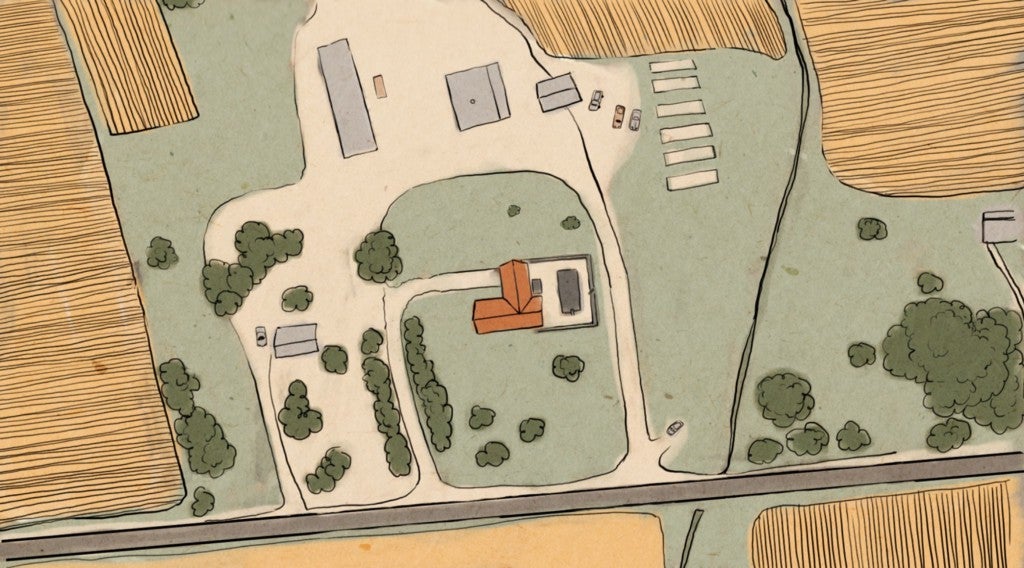
Earlier that night, Pierce’s neighbor Lydia Bell and her boyfriend were pulled over by Deputy Sheriff Jerry Woods for no clear cause on a dirt road that leads to her house, across the highway from Pierce’s home. Bell’s brother told her he saw a sheriff’s vehicle and a red pickup heading toward Pierce’s house. Bell’s granddaughter saw a blue truck with two men inside parked in the woods with a clear view of Pierce’s home. Bell and her granddaughter reported these sightings to the SBI the following day, and in 1991 Coman confirmed that Woods made the stop. Woods ignored repeated requests to comment.
More curious still, in September 1990, several months after Chavis’ botched murder trial, an unnamed woman told the local paper that she and three friends had been camping half a mile behind Pierce’s residence when they witnessed a pair of men — dressed in hunting clothes and carrying shotguns — walk up a trail toward Pierce’s house close to the time of his slaying. About 15 minutes later, shots rang out. Shortly thereafter, I confirmed the story with her and one of the other campers, Kerry Dean Jones, who offered to come forward with his story in 2012. None of the campers ever reported the sighting to authorities.
There was also the story I heard in 2008 — that Dexter Earl Locklear was said to have broken down while smoking crack and confessed to killing Julian. In all my years of reporting on the case, I’d only had one conversation with him in the early 1990s and never gave what he told me much thought: Had I heard the rumor that he was involved in Julian’s murder?

In March 2009, 21 years after Julian Pierce’s death, I asked Julia Pierce to meet me in Robeson. I’d recently received a call informing me that Dexter Earl Locklear might be dying, so Julia and I went to the hospital to see him. After we slipped on hospital masks, Julia asked the nurse whether they were for Dexter Earl’s health or our own. “Yours,” the nurse responded. Dexter Earl was ill with hepatitis and contagious.
He smiled when we entered — two nice ladies stopping by — but then Julia lifted her mask. “I want you to see my face,” she said. “I’m Julia Pierce, the daughter of Julian Pierce.” His smile faded.
With no hesitation, Julia took her place in the chair adjacent to his bed and scooted it toward him, planting herself deep in his personal space.
He started by telling Julia he had loved her father “to death,” a turn of phrase that caused her to catch my eye. Her face stayed expressionless as he ranted, “Hubert Stone is as crooked as the goddamn mafia. He would kill you, lock you up or he could have a hit put on your ass.”
A feral life force animated him, an unexpected energy from someone supposedly so close to death. He slipped from his bed, wearing only boxer shorts, and dragged a rolling I.V. over to the sink to pee into the plastic urinal.
I pushed him on the rumors about his crack-inspired confession: “Me? I don’t know where you got your goddamn information. It’s fucked up. I don’t appreciate it. That’s a goddamn lie,” he screamed.
Dexter Earl described a longstanding favor-trading relationship with Stone and claimed that on at least 20 occasions, Stone fixed cases for Dexter Earl’s associates. He described a process of contacting deputies, in particular Deputy Mark Locklear (no relation to Dexter Earl), who in turn would instruct officers not to show up to court or otherwise obfuscate the truth. (Mark Locklear, for his part, said that none of this happened and that Dexter Earl made it all up.) Dexter Earl bragged that Stone directly helped him evade drug charges and wiped clean more that 50 driving offenses.
“He helped me stay out of jail, and I helped him,” he explained. “If people needed help, I would go see Hubert.”
Julia commented that Stone “had a lot to lose if Dad got into the courthouse,” and Dexter Earl agreed. “Everyone was afraid of your father — Stone, Joe Freeman Britt, the whole county was afraid because Julian would have tried to run it honest.”
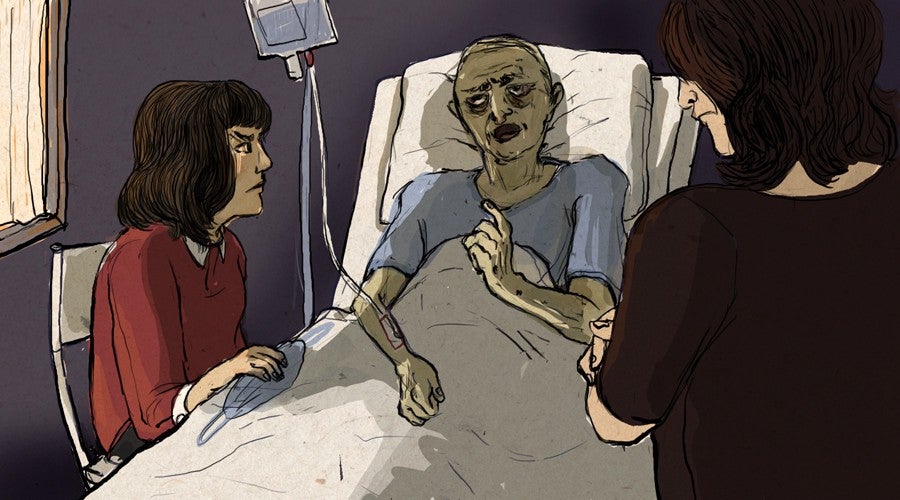
Dexter Earl advanced the idea that maybe someone had tried to make Pierce’s murder look like a drug setup, claiming that a friend had seen white powder on Pierce’s dead body at the crime scene. (In fact, the state collected a white powder, but never tested it, relying on the medical examiner’s opinion that it was buffer powder from the shotgun.) Though Dexter Earl denied seeing Goins or Chavis the night of the murder, he concedes he was with Goins the day after the warrants were issued in response to the complaints made by Pierce’s girlfriend.
When Julia mentioned Goins again, Dexter Earl fell into a reverie, talking to himself as if we weren’t there. “Now that was some shit. I don’t think he actually killed him. I think that shit happened after him. I just don’t see how Johnny could have killed him.”
Before we left, I poured Dexter Earl some juice. He was worn down, barely speaking above a whisper. As I readied the cup, Julia said, “I suspect you and Dad had a lot in common.”
“We did,” agreed Dexter Earl, who had worked toward a law degree, but never finished law school, unlike Pierce.
“I still think Stone ordered Dad’s killing,” Julia said.
“I was not aware. I was not aware.”
“But you know he would do something like that?”
“I take back what I said. I was totally scared of Hubert Stone. I was more fearful of Hubert Stone than anybody.”
“Because you knew he could do anything,” Julia offered.
“He would do anything.”

On the first day of October 2016, I was once again with the Pierces, this time at their annual family reunion. Picnic tables were set up under an overhang, and alongside them a feast: trays of BBQ, fried chicken, a plethora of sides and an emporium of baked goods and sweets. Julia, now an attorney with the federal government’s Indian Health Service, had come with her husband and three children, the youngest named for her father. Her brother Julian Jr., now a doctor, and his wife were there, too. The family is thriving in many ways, but life continues to be clouded by the pain of Julian’s murder, and their doubts about its legal resolution. Julia, in particular, remains determined to discover the truth.
“You just keep running at the windmill,” she said. “It’s in the hopes that there will be some enlightenment” — not vengeance. “Not knowing why someone would do something so horrendous is absolutely worse than them not being punished.”
It would be hard to punish anyone at this point, anyway; many of the key figures are now dead, including Stone, who never faced criminal charges for wrongdoing during his 16-year tenure as sheriff; Britt, who served an uneventful seven-year term as Superior Court Judge before entering private practice; and Dexter Earl Locklear, who died five years after we met him in the hospital.
Mark Locklear is no longer with the Sheriff’s office and says he remains troubled by a story that circulated at the time of Pierce’s death. “There was a rumor going around that I was one of Hubert Stone’s hit men,” Locklear told me in a phone call this December, in which he strenuously denied any involvement in the Pierce case. “I had already killed [Zabitosky] and [Stone] had me to take Julian out,” according to rumors. “That was even going around. And allegations of that nature really hurt. I mean, it really hurts.”
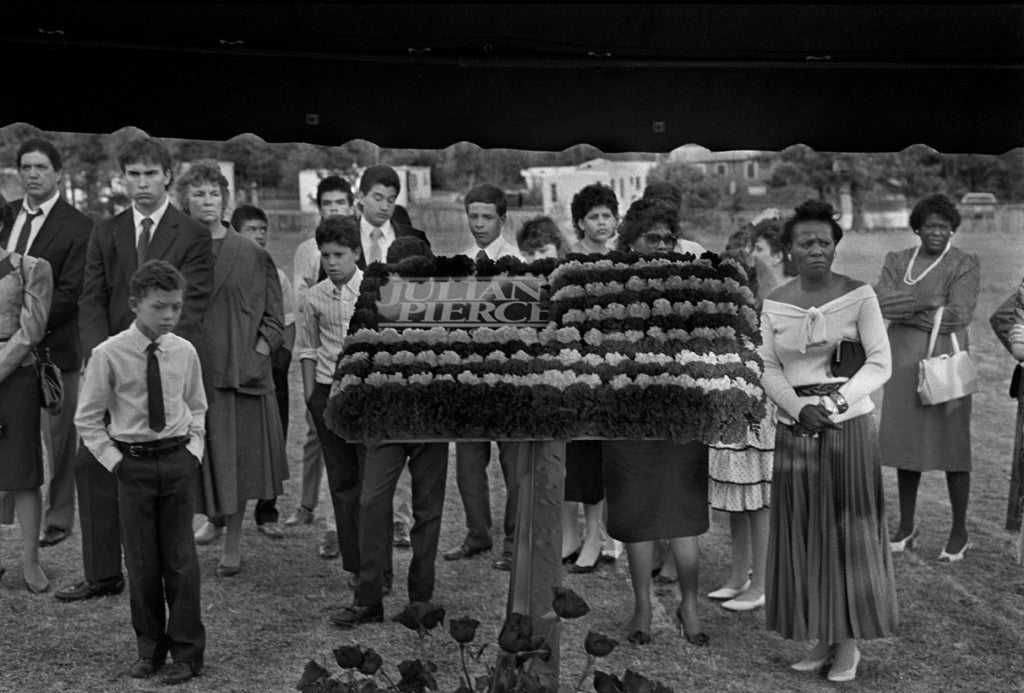
But the process to reopen the case still faces many hurdles. After the 2009 hospital encounter with Dexter Earl, I met with former sheriff Glenn Maynor, then imprisoned for perjury and theft of public funds. Along with 20-plus deputies from Robeson County, Maynor had been swept up in a multi-agency investigation known as Operation Tarnished Badge, which busted cops for everything from pirating satellite TV signals to money laundering, kidnapping, drug trafficking and armed robbery.
Though I’d first approached Maynor — who said he’d reopen Pierce’s case during his campaign for sheriff against Stone — in 1998, he turned me down at that time. But on this visit he told me he’d never looked into Pierce’s case because the murder file had gone missing from the sheriff’s office (a statement Mark Locklear and others in the department have contested). “My intention was to reopen it,” Maynor confirmed to me last year. “But when you do, you need something to start with, and there was nowhere to go.”
Efforts by the Pierce family, legal advocates and me to request that the Department of Justice investigate Pierce’s death in 2009 similarly failed. In 2011, Julia and I petitioned Roy Cooper, then the attorney general of North Carolina, to reopen the case. A spokesman informed us that the office was unwilling to meet with us and suggested we try again when James Coman retired. A year later, the Lumbee Tribe passed a resolution in support of the Pierce family’s efforts to reopen the case, and in the ensuing years, members of the North Carolina General Assembly also expressed incredulity that Pierce’s death resulted from a domestic dispute.
“His murder is still a mystery,” stated Charles Graham, a Democrat representing Robeson, during a June 2015 floor discussion about his resolution to honor Pierce’s life and legacy, which passed unanimously.
Around that same time, I met with Coman at a bagel shop in Raleigh. He scoffed at the story of the campers, calling it a publicity stunt orchestrated by a private investigator working with the Pierce and Chavis families. When I said I’d found them credible, his expression changed. “If you believe the story of the two men coming up the trail,” Coman reasoned, “then you need to believe that one of them also killed Johnny Goins.”
“Exactly,” I replied.
But after a moment, he once again rejected any broader theory: “[I’m] morally certain Goins was the killer.”
In 2014, the Southern Coalition for Social Justice’s staff attorney Ian Mance began investigating Pierce’s case, after Julia Pierce and I approached him with our evidence. Mance re-interviewed many of the 120 sources I’ve spoken to over the years, as well as new informants, and presented his findings to Cooper in December 2015. In April 2016, Mance and Julia Pierce were thrilled to hear that finally the State Bureau of Investigation had agreed to reinvestigate the murder out of its Fayetteville office. But when they met with officials there, “those agents reacted negatively to the assignment and effectively shut the new investigation down before it could begin,” said Mance. In late October, an SBI spokesman told me the agency “does not have an active investigation relating to the death of Julian Pierce.”
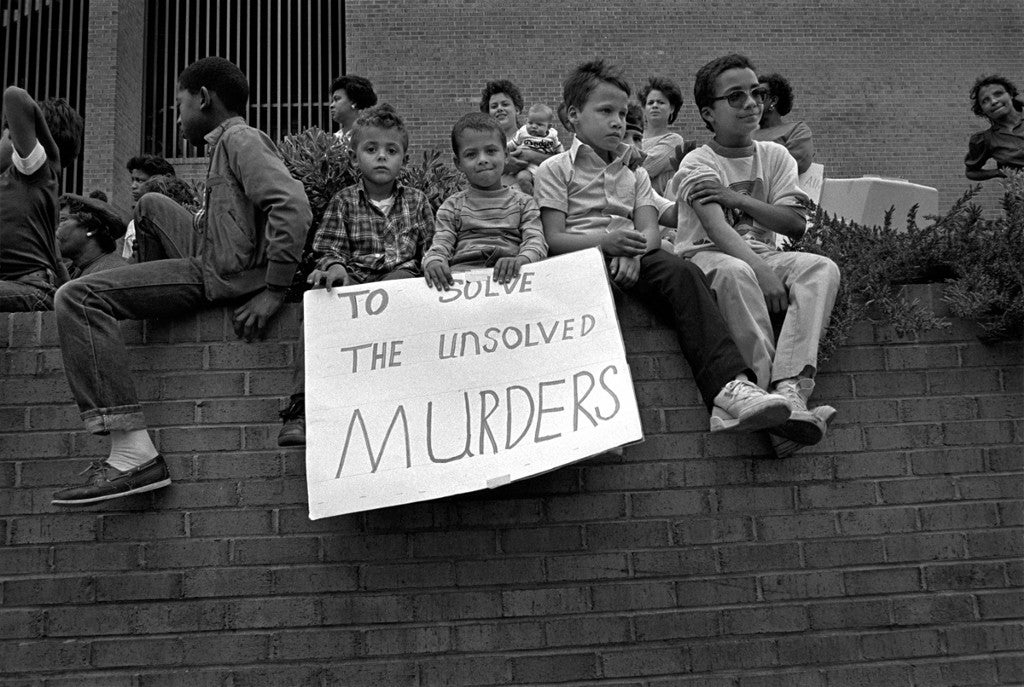
But the moment for progress could come soon. In November, Cooper was elected governor of North Carolina. The power to reopen the case now lies in his hands: As of 2014, the SBI reports directly to the governor’s office, instead of the attorney general, as in most states.
“I would personally encourage the governor to consider what’s possible and that which can be done to reopen the case,” says Rev. Sidney Locks. “There’s a population in eastern North Carolina that’s been waiting far too long for justice to be clarified and brought forth and uncovered by persons in positions who have intentionally caused the truth to be hidden.”
Julia is convinced her father “sealed his fate” when he refused to take Stone’s advice to withdraw his candidacy. She believes her father’s integrity and his commitment to justice precluded any choice other than staying in the race. I still think about what Pierce told his cousin Curt after telling Curt not to follow him around with a gun: “‘They can kill me, but they sure as hell can’t eat me.’” Though the meaning is vague, I’ve come to understand it as an expression of Pierce’s trust that even in death, his push for racial justice would live on.
“The last thing I said to him was, ‘Don’t you realize how dangerous this is?’” Julian’s brother Roy Pierce told me at the reunion. “He just told me, ‘Someone has to stand up and do something.’”

Indeed, five weeks after his murder, on May 3, 1988, the people of Robeson County elected Julian Pierce posthumously to the office of Superior Court judge, by nearly 2,000 votes.
